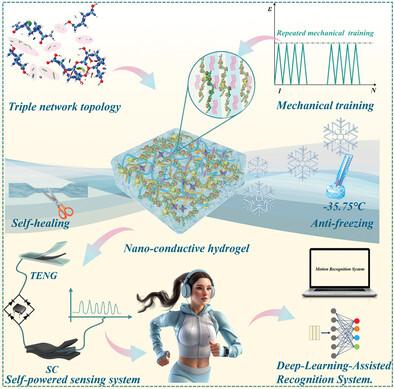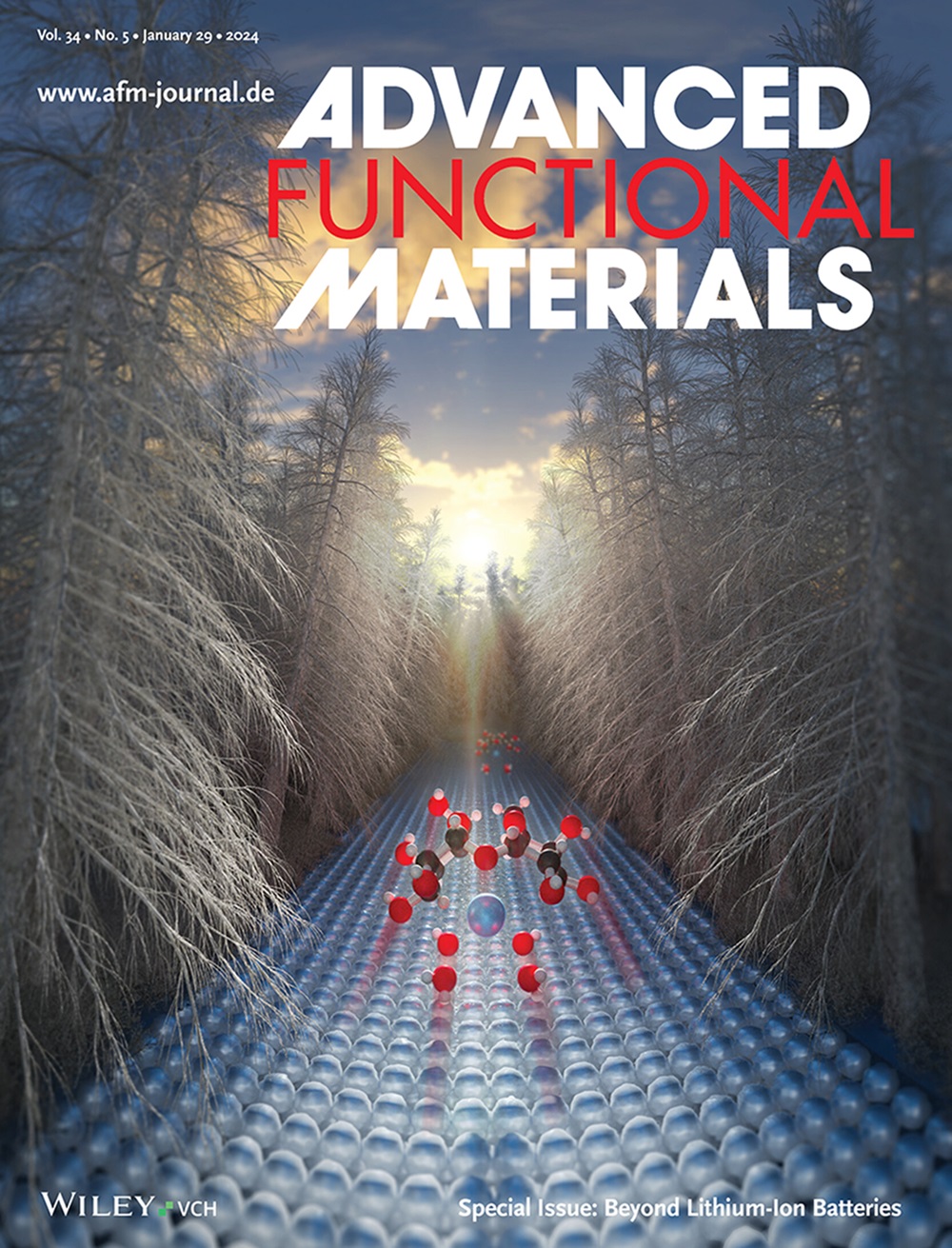Multifunctional Nano-Conductive Hydrogels With High Mechanical Strength, Toughness and Fatigue Resistance as Self-Powered Wearable Sensors and Deep Learning-Assisted Recognition System
IF 18.5
1区 材料科学
Q1 CHEMISTRY, MULTIDISCIPLINARY
引用次数: 0
Abstract
High mechanical strength, toughness, and fatigue resistance are essential to improve the reliability of conductive hydrogels for self-powered sensing. However, achieving mutually exclusive properties simultaneously remains challenging. Hence, a novel directed interlocking strategy based on topological network structure and mechanical training is proposed to construct tough hydrogels by optimizing the network structure and modulating the orientation of molecular chains. Combining Zn2+ crosslinked cellulose nanofibers (CNFs) and a polyacrylamide-poly(vinyl alcohol) double-network, the unique interlocked-network structure exhibits an enhanced toughening effect due to hydrogen bonding and metal-ligand interactions. The aligned nanocrystalline domains achieved by training further contribute to an increase in the toughness and fatigue thresholds. This innovative approach synergistically enhances the mechanical properties of the nano-conductive hydrogel, achieving a maximum tensile strength of 4.98 MPa and a toughness of 48 MJ m−3. Notably, the CNFs template with anchored polyaniline, when oriented through mechanical training, forms a unique directional conductive pathway, which significantly enhances the power output performance. Besides, a motion recognition system based on a self-powered sensing device is designed with the assistance of deep learning techniques to accurately identify human motion behaviors. This work showcases a potentially transformative flexible electronic material for self-powered sensing systems and intelligent recognition systems.

具有高机械强度、韧性和抗疲劳性的多功能纳米导电水凝胶可用作自供电可穿戴传感器和深度学习辅助识别系统
高机械强度、韧性和抗疲劳性对于提高自供电传感导电水凝胶的可靠性至关重要。然而,同时实现相互排斥的特性仍具有挑战性。因此,我们提出了一种基于拓扑网络结构和机械训练的新型定向互锁策略,通过优化网络结构和调节分子链的取向来构建韧性水凝胶。结合 Zn2+ 交联纤维素纳米纤维(CNFs)和聚丙烯酰胺-聚乙烯醇双网络,独特的互锁网络结构因氢键和金属配体的相互作用而表现出更强的增韧效果。通过训练获得的排列整齐的纳米晶域进一步提高了韧性和疲劳阈值。这种创新方法协同增强了纳米导电水凝胶的机械性能,最大拉伸强度达到 4.98 兆帕,韧性达到 48 兆焦耳/立方米。值得注意的是,带有锚定聚苯胺的 CNFs 模板通过机械训练定向后,形成了独特的定向导电通路,从而显著提高了功率输出性能。此外,在深度学习技术的帮助下,还设计了一种基于自供电传感设备的运动识别系统,以准确识别人类的运动行为。这项工作为自供电传感系统和智能识别系统展示了一种潜在的变革性柔性电子材料。
本文章由计算机程序翻译,如有差异,请以英文原文为准。
求助全文
约1分钟内获得全文
求助全文
来源期刊

Advanced Functional Materials
工程技术-材料科学:综合
CiteScore
29.50
自引率
4.20%
发文量
2086
审稿时长
2.1 months
期刊介绍:
Firmly established as a top-tier materials science journal, Advanced Functional Materials reports breakthrough research in all aspects of materials science, including nanotechnology, chemistry, physics, and biology every week.
Advanced Functional Materials is known for its rapid and fair peer review, quality content, and high impact, making it the first choice of the international materials science community.
 求助内容:
求助内容: 应助结果提醒方式:
应助结果提醒方式:


